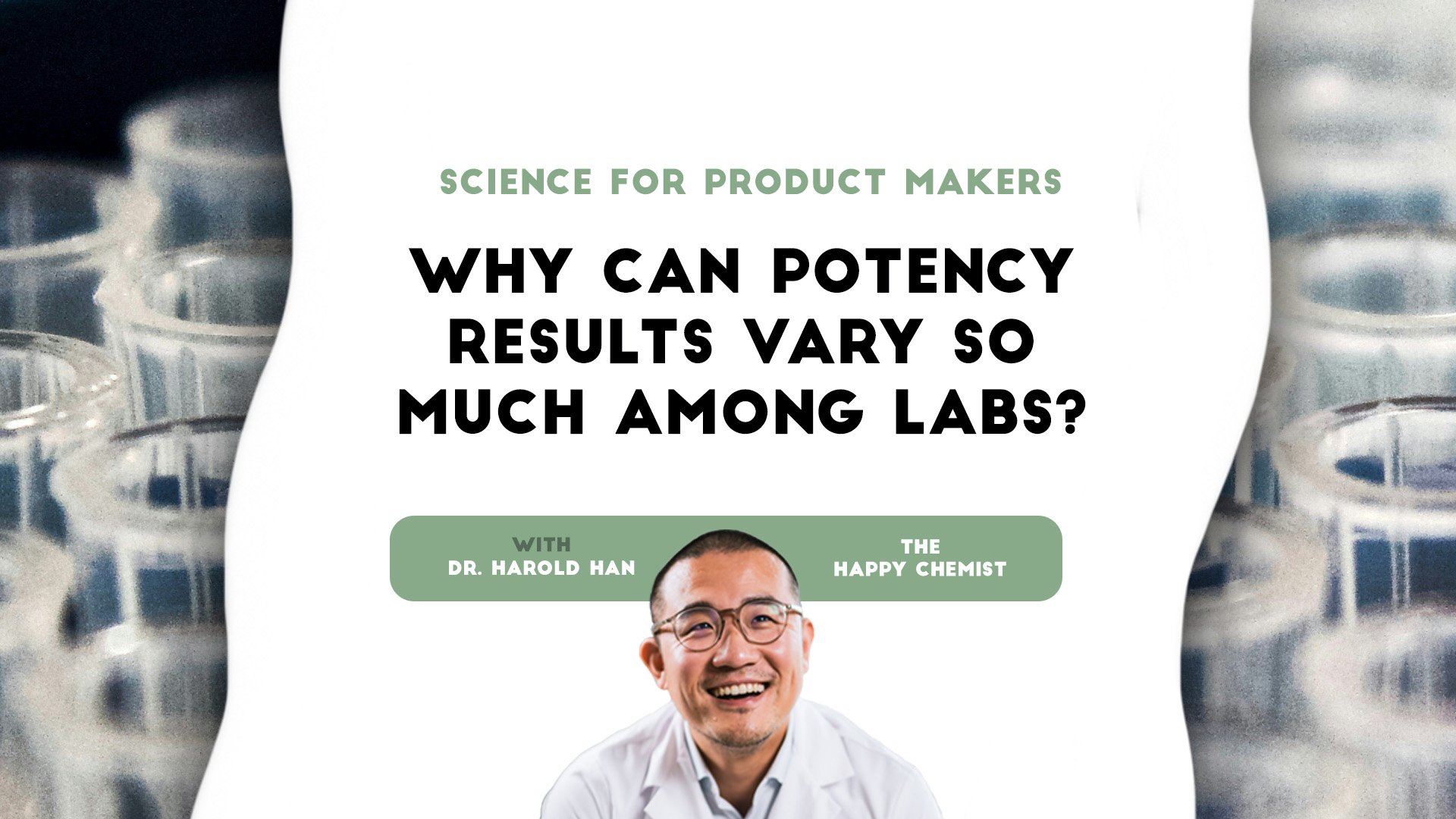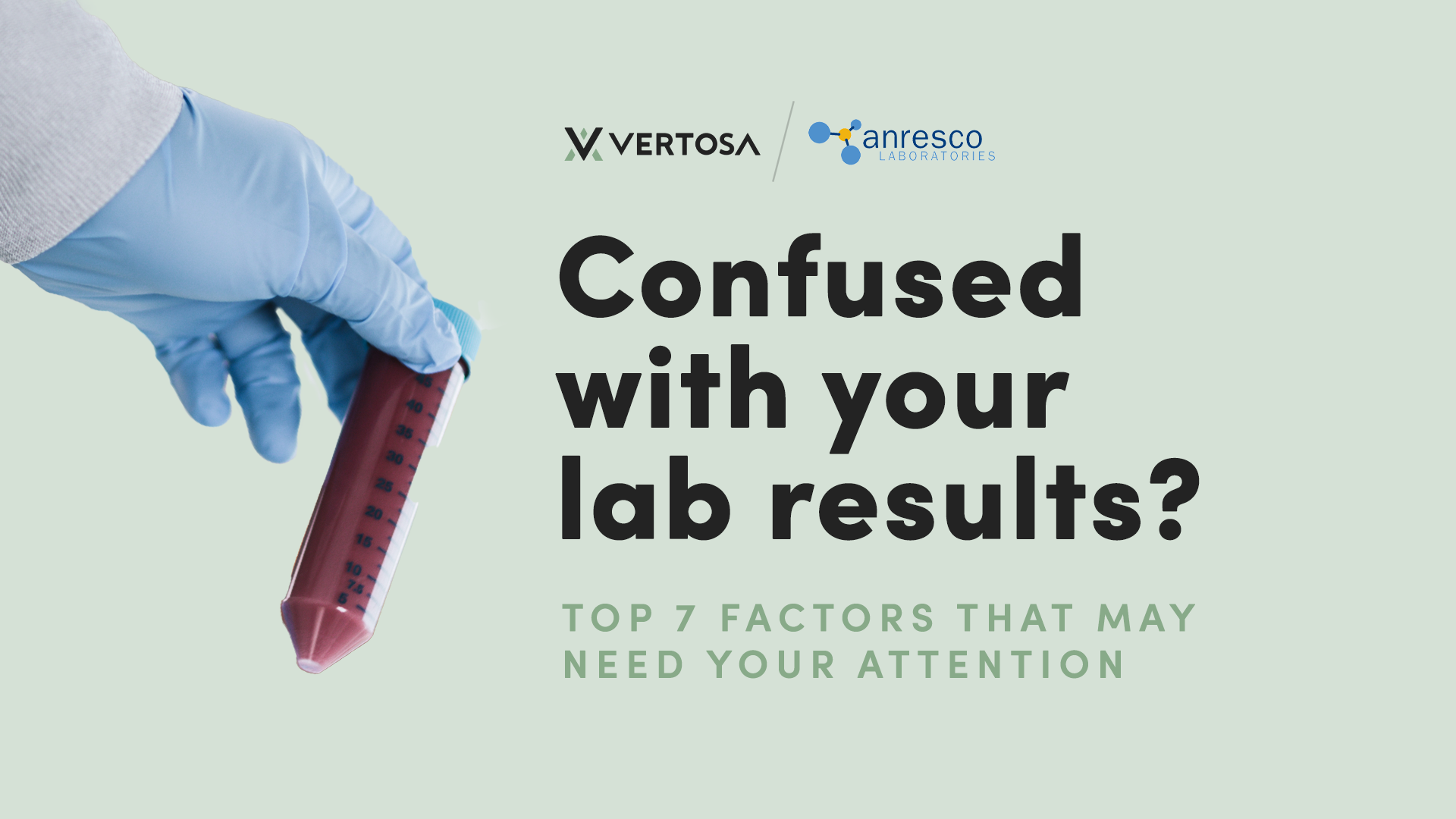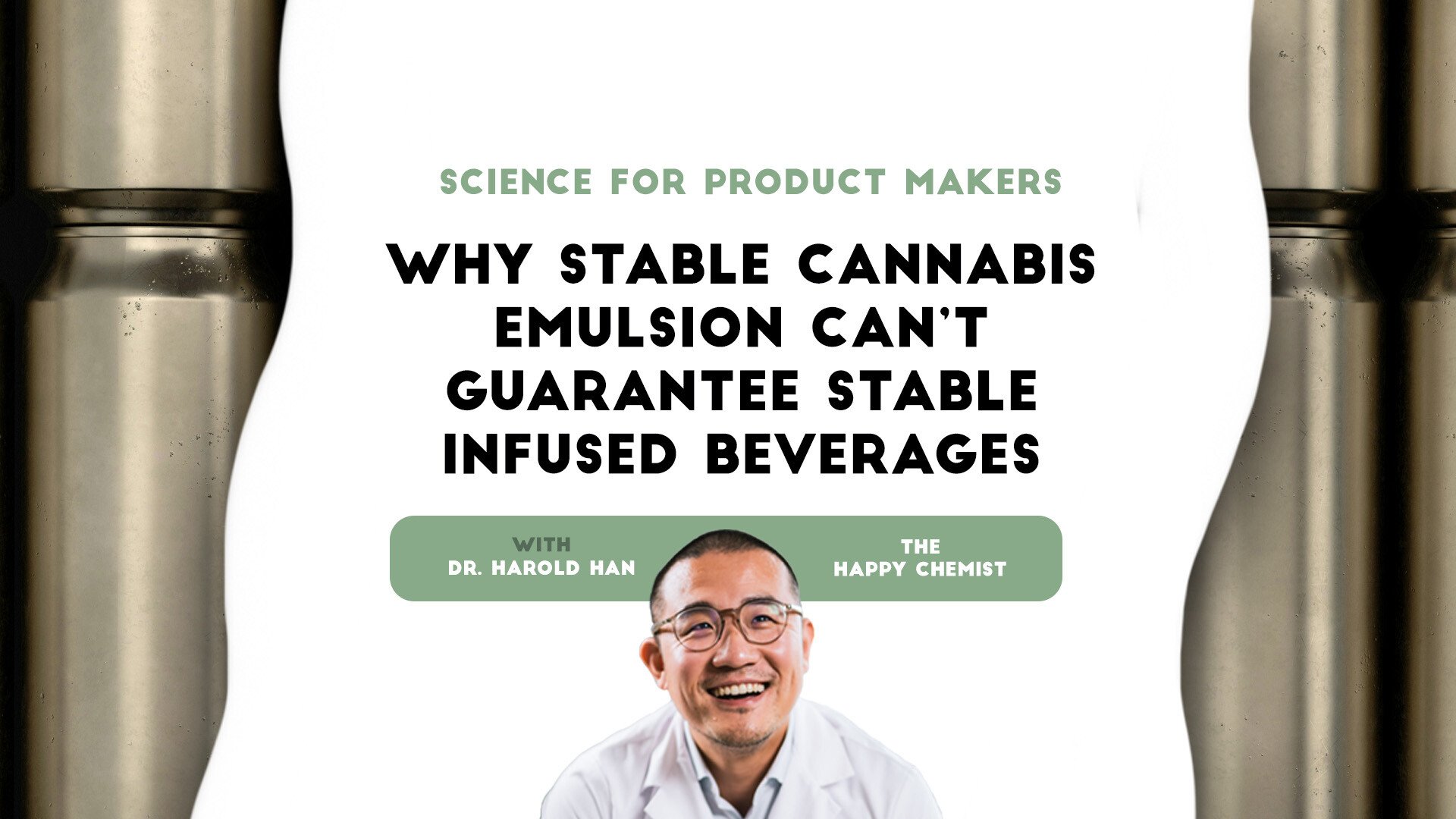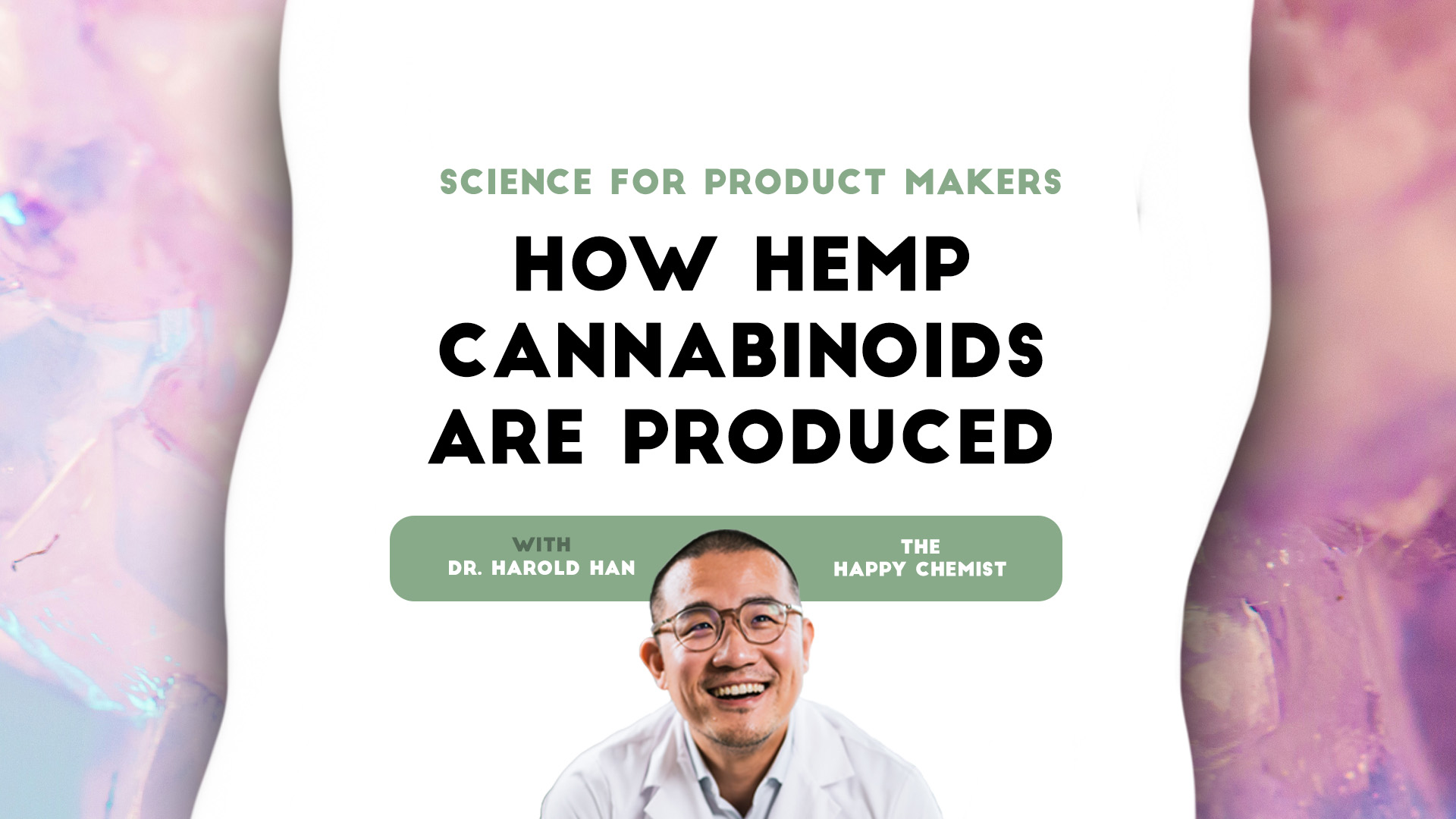Confused with your lab results? Top 7 factors that may need your attention
This article was written in partnership with Anresco Labs.
4 min read
 Dr. Harold Han - "The Happy Chemist"
:
6/29/24 8:54 PM
Dr. Harold Han - "The Happy Chemist"
:
6/29/24 8:54 PM

This post is also published as an article on Harold's LinkedIn profile. You can read and leave comments here
If you work in the cannabis industry, you’ve likely experienced the “Lab Potency Variance”. You may see over 10% potency variance from two different labs on the very same sample. Even results from the same sample tested by the same lab can vary significantly when tested on two separate days.
I know this leaves a lot of our clients scratching their heads: if all labs have a license issued by the governing body, how could potency results vary this much? A recent poll showed people believe extraction methods contribute the most to the potency variation, followed by cannabinoid standards and staff training. We are aware that many brands will submit samples to multiple labs and then select the highest potency CoA in a practice called "lab shopping", however the scope of this post will only focus on the topics from this poll.

This is a very important factor that does not get enough attention. Let’s start with how HPLC works. When you look at the raw data from an HPLC test (also called a chromatogram), each compound is represented by a single peak. The area of the peak represents the concentration of the compound: a larger area indicates a higher concentration of the compound. In order for HPLC to tell the absolute concentration of a compound, the lab needs to establish a standard curve. This is where the cannabinoid standard comes in.
The cannabinoid standard usually has a known purity that is close to 100%. The lab dilutes it to make a range of samples at known concentrations and then runs them through HPLC. By doing this, a relationship between the peak area and concentration can be established, which is called the standard curve. Shown in the graph below, when running an unknown sample, we can fit the unknown peak area onto the standard curve to find out its concentration.

The above graph demonstrates the basic mechanism of HPLC quantification. The standard curve is established and used to tell the concentration of an unknown peak. In the example above, the unknown sample (shown in yellow) shows a concentration of 5 mg/g
The standard curve is the ruler of HPLC quantification, which is built on the assumption of high quality, high purity cannabinoid standards. For example, if a supposedly 100% pure THC standard only has 98% purity in reality, it would cause a 2% variance in all potency results. That is why labs often rely on “Certified Reference Material” (CRM), which are cannabinoid standards produced by an 17034 accredited provider following strict guidelines.
HOWEVER it is challenging to obtain high quality CRM. Since cannabis is still listed as a Schedule 1 drug, there is not a national organization who regulates it. There are different suppliers producing CRM but their qualities vary. Some allow 10% purity variance between lots. The variation in CRM poses inherent challenges to testing labs. If two labs use CRM from two different suppliers, their resulting sets of data will likely differ. If the lab uses a new lot of CRM, they usually need to validate it against the old lot. Otherwise, the potency data may drift overtime. That is why sometimes you see the same lab suddenly have a systematic data shift.
Solving this issue may be beyond our individual control. In order to have consistent cannabinoid standards, we need a national rescheduling of cannabis to Schedule 3 or legalization so that NIST can regulate them.
Below is a general flow of potency analysis. Infused products need to be weighed, extracted and diluted before being injected into HPLC for analysis. Within this process, extraction methods can cause huge potency variations.

Accurate quantification requires 100% of the THC to be extracted but it can be very complicated in reality because different product chemistries require different extraction methods.
For example, Dr. David Dawson published a paper demonstrating that when extracting cannabinoids from infused chocolate, the more the sample chocolate weighs, the less cannabinoids can be extracted. This is because the fat in the chocolate holds on to cannabinoids, preventing them from being released into the organic solvent. Knowing this, labs need to increase the solvent amount when extracting cannabinoids from a larger piece of chocolate.
Our team at Vertosa discovered that sediment in infused beverages usually bind with cannabis emulsion droplets, dragging them down to the bottom. That is why we suggest labs to fully vortex the sample and take an aliquot that contains a representative quantity of the sediment in order to perform the proper extraction (Source). In the early days, some labs regarded their extraction methods as a competitive advantage. I believe, however, that in order for this industry to grow, multiple labs should collaborate and establish extraction methods for each product type. State or federal governing bodies should validate, approve and reinforce those methods.
Looking forward, the proliferation of cannabis beverages would lead to more innovative beverage bases consisting of amino acids, fats, proteins, electrolytes, vitamins, polyphenols and other functional ingredients. Vertosa is excited to keep working with our lab partners to evolve extraction methods to meet industrial growth.
Whenever there are humans involved, there will be errors. The error can come from systematic operation. For example, when performing sample dilution, an experienced chemist and a new chemist may have slight variations depending on their habit of pipette usage. The error can come from negligence, where samples can be mis-labeled or switched. The error can also come from intentional inflation of the results, which is outside the scope of this article but certainly a factor worth noting.
Staff training plays a big role in maintaining consistency. As analytical testing labs are often a great entry point for junior technicians, training is even more critical to set them up for success. Leveraging automation in key steps (such as dilution) could also circumvent human error, thus boosting consistency.
HPLC is the main tool for potency detection, but the age, condition, and maintenance of the tool can cause variations in results.
Because of this, Preventative Maintenance (PM) is critical. Not only should PM be performed as scheduled, it is also important to evaluate whether an instrument is ready to return to service after maintenance. But PM may cause equipment to shut down, thus interrupting operations, so it can be a fine balance for smaller labs to operate PM while fulfilling business needs.
For any new industry that is built from ground zero, it takes time to transition from chaos to order. The potency testing challenge reflects that our cannabis industry is experiencing this transition right now. How do we get better from here? Here are my suggestions:
What do you think? What else could we do to solve these issues in testing? Let me know your ideas in the comments!
Dr. Harold Han — the “Happy Chemist” — combines his storied background in emulsion chemistry and science with curiosity and fascination in the rapidly growing cannabis industry. Developing nano and micro emulsions his entire career, Harold holds a Ph.D in Surface Chemistry from NYU and is the holder of multiple patents for his inventions in emulsion chemistry.
As the Chief Science Officer at Vertosa, Harold spearheads the company’s development of industry-leading and customized active ingredients for infused product makers, offering pre-suspended aqueous solutions to create incredibly homogenous and stable products while maximizing bioavailability, clarity, and taste.
To learn more about the science of cannabis, make sure to follow Harold on LinkedIn and check out his Happy Chemist videos.

This article was written in partnership with Anresco Labs.

Last week I asked my followers what they think is the most important factor for cannabis beverage potency stability. Most people selected “infusion...

This post is also published as an article on Harold's LinkedIn profile. You can read and leave comments here.